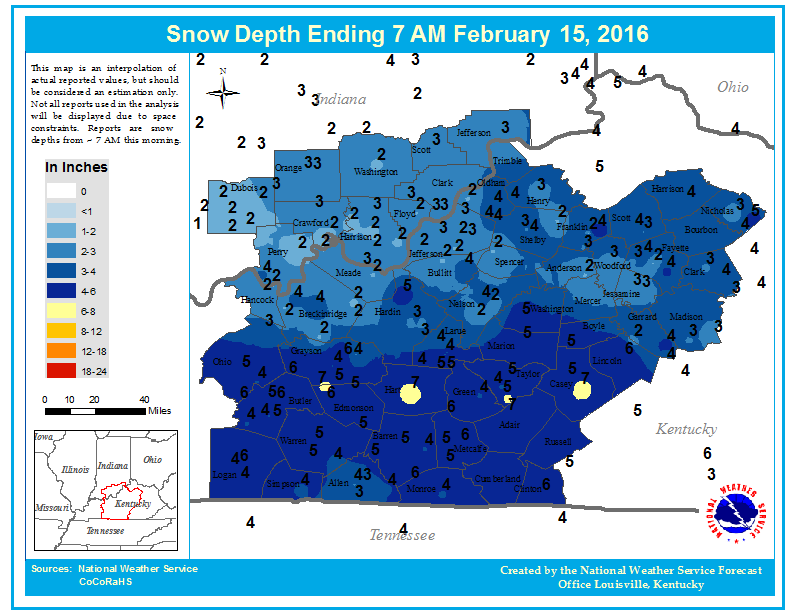Wednesday, Feb. 24, 2016
As the major surface low pressure area moved right over the area this morning, we actually got a break from the heavy rain and even saw some sunshine with temperatures in the upper 50’s for an hour or two. Then, as the low moved northeast, the colder air on it’s backside dropped temperatures in a hurry…and the rain resumed.
But, we’ve seen the worst of it now. Winds will start decreasing this evening and the rain, possibly changing to snow, will be diminishing between 7 P.M. and 9 P.M. After 9 P.M., light rain showers and/or snow flurries will be scattered around the area during the night. Whether we have rain or snow showers doesn’t make any difference. If it’s snow, it’ll melt on impact so there’ll be no accumulation – so it essentially makes a situation I like to call “white rain.” It has the same impact as rain.
Temperatures should remain above freezing in the Louisville area, so traffic problems should be no worse than wet roads.
4-5 days ago the models were predicting a major cold air outbreak to hit the eastern half of the country this weekend. But, nature didn’t seem to get the message – in reality the cold air is pushing east rather than south. So, now it looks like a cold day tomorrow followed by warming Friday into the weekend. Not as warm as last weekend, but still very nice for late February.
Note: I know some forecasts floating around include the possibility of up to an inch of snow (on grassy areas), but that idea seems to me to be a real outlier.

